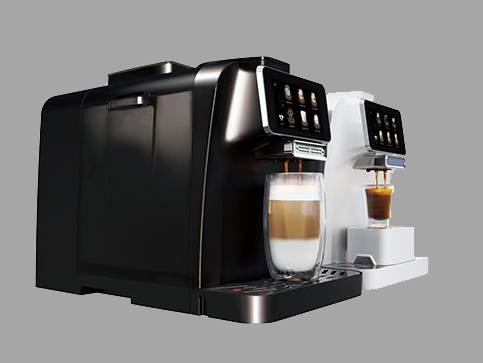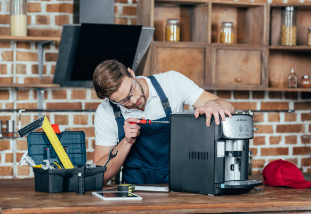Blogs How to Inspect a Used Coffee Maker Before Buying | Brew Smart and Save Money

Content
Coffee makers are a staple in many households, providing that much-needed caffeine boost to start the day. However, buying a new coffee maker can sometimes be pricey, especially for high-end models, with costs ranging from $50 to $300 or more. But did you know you can enjoy significant savings by purchasing a used coffee maker? With prices often slashed by 50% or more, you can find a reliable machine for as little as $20 to $150. While buying used food can be a great way to save money, it’s essential to know what to look for to ensure you’re getting a coffee maker that will continue to serve you well. Used coffee makers can last for years if they’ve been well-maintained, offering the same great taste and convenience as a new model. This guide will walk you through the process of inspecting a used coffee maker, so you can brew with confidence.
1 Benefits of Buying a Used Coffee Maker

Cost Savings
Used coffee makers are more affordable, often costing half the price of new ones.
Eco-Friendly
Purchasing second-hand reduces waste and supports sustainability.
Variety
Access a broader range of models, including discontinued ones.
Proven Performance
Older, well-maintained models can provide reliable brewing.
Detailed Explanation
Buying a used coffee maker can offer significant financial savings, making it an attractive option for many consumers. New coffee makers, especially from well-known brands, can be quite expensive, with prices reaching up to $300 or more for high-end models. However, purchasing a used coffee maker can reduce these costs by as much as 50% or more, allowing you to invest in a quality machine without breaking the bank. Whether you’re a casual coffee drinker or a daily enthusiast, the savings from buying used can be substantial, freeing up your budget for other household expenses or upgrades. Moreover, many used coffee makers are lightly used and still in excellent condition, offering the same brewing performance as a new machine at a fraction of the cost. Beyond cost savings, buying a used coffee maker is also an environmentally conscious choice. The production of new appliances contributes to carbon emissions and resource depletion, so opting for a second-hand machine helps reduce the demand for new products, conserving resources and minimizing waste. This aligns with growing consumer awareness of sustainability and the push towards more eco-friendly lifestyles. Additionally, by purchasing a used coffee maker, you may also gain access to older models that are no longer in production but are still highly regarded for their durability and performance. These models, often from reputable brands like Keurig, Cuisinart, or Breville, can continue to deliver excellent coffee for years to come, proving that age doesn’t necessarily diminish quality. Buying used not only saves money but also supports a sustainable, environmentally friendly lifestyle.
2 Key Factors to Consider When Buying Used

Age
Look for coffee makers that are less than 5-7 years old.
Condition
Check for visible wear, especially on the carafe, heating plate, and water reservoir.
Functionality
Ensure all settings and features work as intended.
Brand and Model
Stick to well-known brands with a reputation for durability.
Detailed Explanation
When purchasing a used coffee maker, age is a critical factor. Coffee makers generally last about 5-10 years, so choosing one that is less than 5-7 years old can help ensure you get the most out of your purchase. It's important to thoroughly inspect the condition of the coffee maker, paying special attention to areas that experience the most wear, such as the carafe, heating plate, and water reservoir. Check for cracks, stains, or any signs of rust that could affect performance. Functionality is another key consideration. Make sure all settings and features, such as programmable timers, brew strength options, and auto-shutoff, work as they should. Choosing a reputable brand like Keurig, Hamilton Beach, or Nespresso can give you added peace of mind, as these companies are known for producing long-lasting, reliable coffee makers.
3 Where to Find Quality Used Coffee Makers

Online Marketplaces
Check platforms like eBay or Facebook Marketplace for deals.
Thrift Stores
Many second-hand shops carry lightly used coffee makers.
Garage Sales
A good place to find well-maintained coffee makers at low prices.
Refurbished Appliance Stores
Some stores specialize in refurbished coffee makers with warranties.
Detailed Explanation
Online marketplaces such as eBay and Craigslist are popular options for finding used coffee makers, offering a wide selection at competitive prices. However, it's important to thoroughly vet sellers by checking their reviews and asking for detailed photos and information about the coffee maker's history. Thrift stores and second-hand shops are also good sources for used coffee makers. You may find a lightly used machine at a fraction of the cost of a new one. According to the Association of Resale Professionals (NARTS), the demand for second-hand appliances is growing as more people seek sustainable and budget-friendly options. Garage sales can be another excellent source, often providing well-maintained coffee makers at bargain prices. Finally, consider checking out stores that specialize in refurbished appliances. These stores often offer limited warranties or return policies, giving you added security with your purchase.
4 Tips for Inspecting a Used Coffee Maker

Test the Machine
Brew a pot of coffee to ensure the machine works correctly.
Check for Leaks
Inspect the water reservoir and carafe for any signs of leakage.
Examine the Heating Plate
Ensure it heats evenly and doesn't show excessive wear.
Inspect the Water Reservoir
Look for signs of mineral buildup or mold.
Detailed Explanation
Before purchasing a used coffee maker, it's important to test it by brewing a pot of coffee. This will allow you to check the machine's functionality and ensure it heats the water properly and brews the coffee evenly. Pay close attention to whether the machine leaks during operation, as this can indicate issues with the water reservoir or internal seals. Inspect the heating plate, as this is a critical component for keeping your coffee warm. Look for any signs of excessive wear, such as scratches, rust, or uneven heating, which could affect performance. Thus, the water reservoir should be thoroughly examined for signs of mineral buildup or mold, which can negatively impact the taste of your coffee and indicate a lack of proper maintenance.
5 How to Maintain a Used Coffee Maker

Regular Cleaning
Clean the machine regularly to prevent buildup of coffee residue and mineral deposits.
Descale as Needed
Use a descaling solution to remove mineral deposits and keep the machine running smoothly.
Replace Parts
If the carafe or other parts are worn, consider replacing them to extend the machine’s life.
Proper Storage
Store the coffee maker in a dry, cool place when not in use to prevent damage.
Detailed Explanation
To extend the life of your used coffee maker and ensure it continues to brew great-tasting coffee, regular maintenance is key. Cleaning the machine regularly helps prevent the buildup of coffee residue and mineral deposits, which can affect both the flavor of your coffee and the machine's performance. Descaling the coffee maker periodically, especially in areas with hard water, is essential to keep the internal components functioning properly. Many manufacturers recommend descaling every 3-6 months, depending on usage. If parts such as the carafe or filters are worn or damaged, consider replacing them to maintain optimal performance. Many coffee makers have easily replaceable parts available from the manufacturer. Finally, if you plan to store the coffee maker for an extended period, make sure it is clean and dry before storing it in a cool, dry place to prevent damage from moisture or temperature fluctuations.
Closing Remarks
Inspecting a used coffee maker before buying it can help you make a smart, budget-friendly choice that meets your caffeine needs. By taking the time to evaluate key factors and understand how to maintain your coffee maker, you can enjoy quality coffee for years to come. So if you're looking to save money or reduce your environmental impact, buying a used coffee maker is a decision that benefits both you and the planet. Brew wisely and enjoy the perfect cup of coffee every day!
Faqs
What should I check when inspecting a used coffee maker?
How can I ensure a used coffee maker is in good condition?
What are the benefits of buying a used coffee maker?
How do I test a used coffee maker before purchasing?
Where can I find quality used coffee makers?
What maintenance is needed for a used coffee maker?
Are used coffee makers reliable?
How can I identify common issues in a used coffee maker?
Leave a Comment
